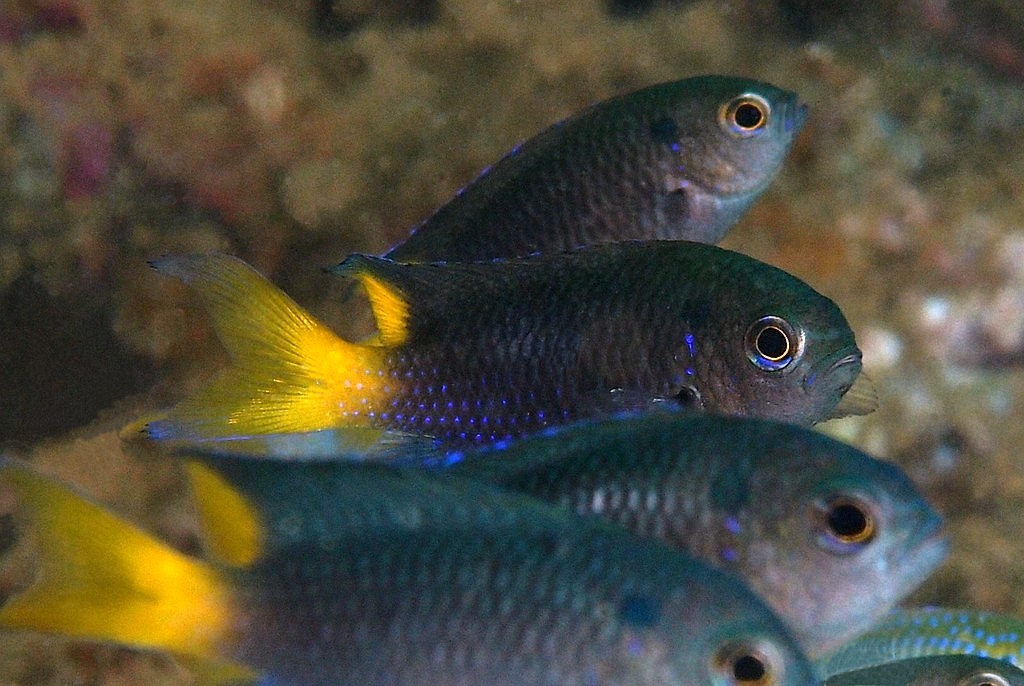
NEOPOMACENTRUS NEMURUS - (BLEEKER, 1857)
Actinopterygii (Class) > Perciformes (Order) > Pomacentridae (Family) > Pomacentrinae (Subfamily) > Neopomacentrus (Genus)
Coral demoiselle, Nemurus chromis, Yellow-tipped damsel,
Synonyme
Glyphisodon nemurus (Bleeker, 1857)
--------------------------------------
Description
Dorsal spines (total): 13; Dorsal soft rays (total): 11-12; Anal spines: 2; Anal soft rays: 11 - 12. Max length : 8.0 cm. Depth range 1 - 10 m.
Etymology
Neopomacentrus: Greek, neos = new + Greek,poma = cover, operculum + Greek,kentron = sting.
Distribution
Western Central Pacific: Indonesia, Philippines, Palau, Papua New Guinea, Solomon Islands, and Vanuatu. Reported from New Caledonia
Biology
Adults inhabit lagoon and inshore coral reefs, usually in areas where silting is prevalent. Aggregates over coral outcrops to feed on zooplankton. Oviparous, distinct pairing during breeding. Eggs are demersal and adhere to the substrate. Males guard and aerate the eggs.
Coral demoiselle, Nemurus chromis, Yellow-tipped damsel,
Synonyme
Glyphisodon nemurus (Bleeker, 1857)
--------------------------------------
Description
Dorsal spines (total): 13; Dorsal soft rays (total): 11-12; Anal spines: 2; Anal soft rays: 11 - 12. Max length : 8.0 cm. Depth range 1 - 10 m.
Etymology
Neopomacentrus: Greek, neos = new + Greek,poma = cover, operculum + Greek,kentron = sting.
Distribution
Western Central Pacific: Indonesia, Philippines, Palau, Papua New Guinea, Solomon Islands, and Vanuatu. Reported from New Caledonia
Biology
Adults inhabit lagoon and inshore coral reefs, usually in areas where silting is prevalent. Aggregates over coral outcrops to feed on zooplankton. Oviparous, distinct pairing during breeding. Eggs are demersal and adhere to the substrate. Males guard and aerate the eggs.